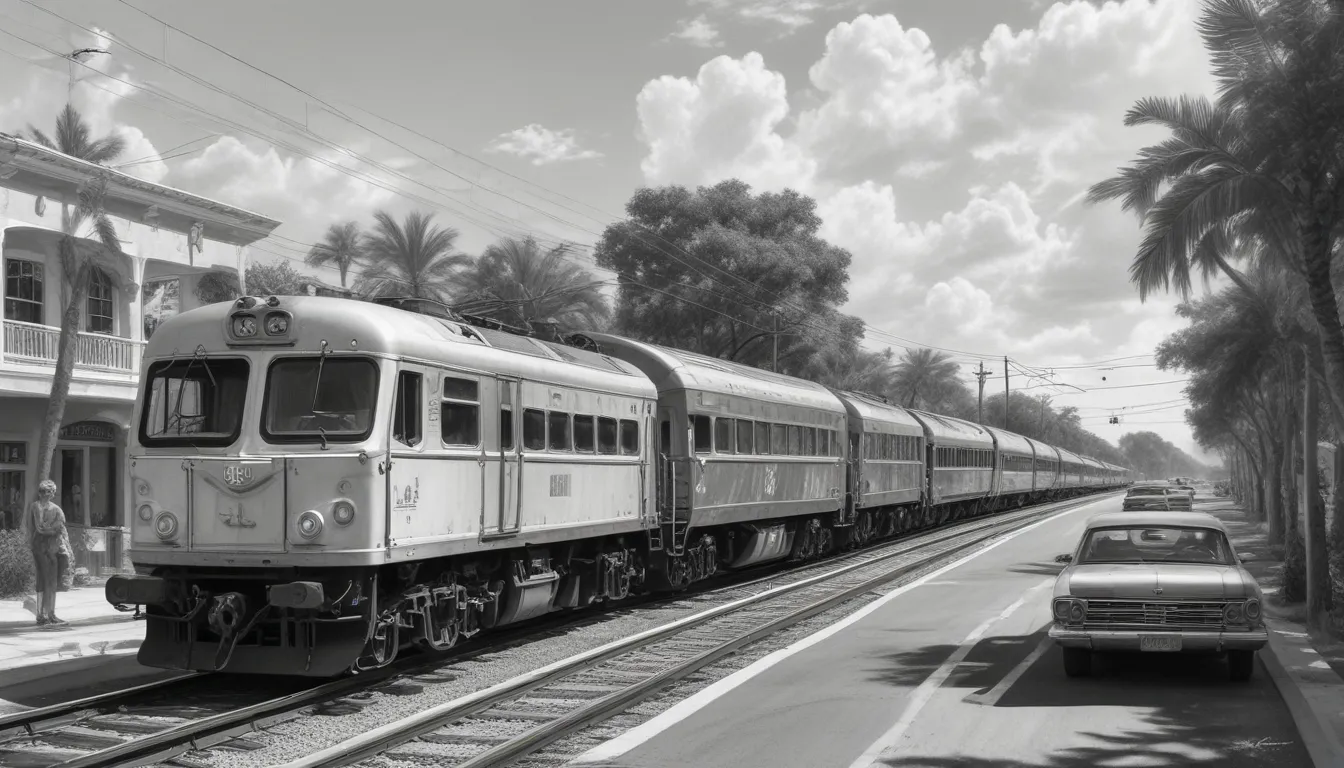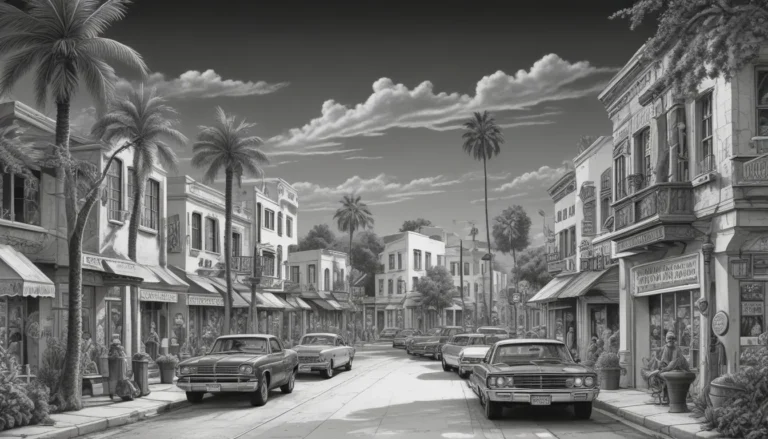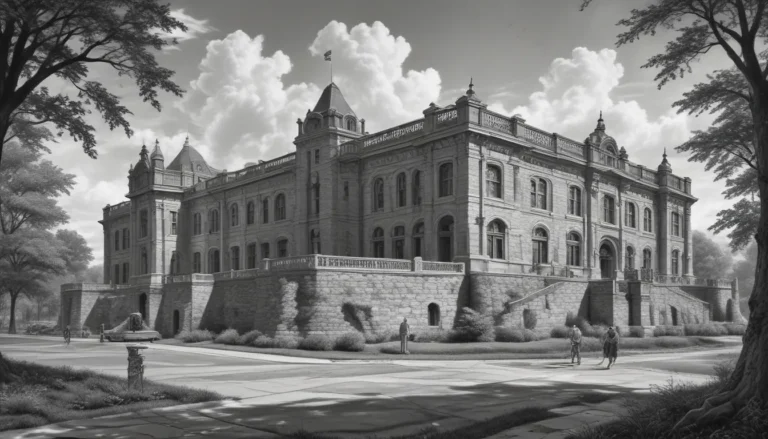The images in our articles are for illustrative purposes only and may not exactly match the content. They are intended to capture your interest and complement the text, not to replace it.
Welcome to the vibrant city of Port St. Lucie, Florida, where picturesque landscapes, diverse culture, and a thriving economy converge to create a dynamic urban environment. As a key hub in the state’s transportation network, Port St. Lucie boasts a well-connected infrastructure that supports the seamless movement of people and goods, driving the city’s growth and development. In this article, we will delve into 14 fascinating facts about transportation and infrastructure in Port St. Lucie, shedding light on the city’s innovative initiatives, key transportation hubs, and the impact of infrastructure on its residents and businesses. From the evolution of transportation in the city to future developments poised to enhance connectivity, each fact will unveil a unique aspect of Port St. Lucie’s transportation landscape. Join us as we embark on a journey through the dynamic world of transportation and infrastructure in Port St. Lucie, Florida.
Key Takeaways:
- Port St. Lucie’s impressive bridges and extensive bike lanes make it easy for people to get around and enjoy the city’s beautiful scenery, promoting a healthy and active lifestyle for everyone.
- By investing in smart transportation planning and sustainable infrastructure, Port St. Lucie is not only reducing traffic congestion but also creating a vibrant and eco-friendly city that benefits both residents and visitors.
Port St. Lucie is Home to the Crosstown Parkway Bridge
One of the city’s standout features is the Crosstown Parkway Bridge, completed in 2019. This impressive bridge spans the North Fork of the St. Lucie River, providing a vital connection between the eastern and western portions of the city. Featuring a unique arch design and dedicated lanes for pedestrians and cyclists, the Crosstown Parkway Bridge enhances the overall transportation infrastructure in Port St. Lucie.
The City Boasts an Extensive Network of Bike Lanes
Port St. Lucie takes pride in its commitment to promoting alternative modes of transportation. With over 130 miles of bike lanes and paths, the city offers a safe and convenient environment for cyclists to travel and explore the area.
The Florida Turnpike Serves as a Major Artery for the City
Running along the city’s western border, the Florida Turnpike facilitates efficient travel to and from Port St. Lucie, connecting residents and visitors to various destinations across the state.
The St. Lucie County International Airport Supports Regional Air Travel
The St. Lucie County International Airport, located just a short drive from the city center, accommodates general aviation and serves as a gateway for business and leisure travelers. It contributes to the accessibility of Port St. Lucie, supporting regional air travel.
The City’s Public Transportation System Offers Convenient Mobility Options
Operated by the St. Lucie County Community Transit, Port St. Lucie’s public transit system provides bus services that link key areas within the city, offering residents and tourists a practical means of getting around.
The Crosstown Parkway Extension Project Alleviates Traffic Congestion
A significant infrastructure initiative completed in 2019, the Crosstown Parkway Extension project extends the Crosstown Parkway to U.S. Highway 1, easing traffic congestion and enhancing connectivity within Port St. Lucie.
The City Embraces Smart Growth Principles for Transportation Planning
Port St. Lucie prioritizes sustainable development and smart growth strategies, integrating transportation planning with land use to create vibrant, accessible, and environmentally friendly communities.
The Port St. Lucie Boulevard Bridge Facilitates Waterway Navigation
Spanning the St. Lucie River, the Port St. Lucie Boulevard Bridge serves as a vital link for maritime traffic, allowing boats and vessels to navigate the waterways and contributing to the city’s overall transportation infrastructure.
The City’s Roadway Network Supports Efficient Commutes
Port St. Lucie boasts a well-maintained roadway system, including major thoroughfares such as Port St. Lucie Boulevard and Gatlin Boulevard, which play a crucial role in facilitating smooth and efficient commutes for residents and visitors.
The City Prioritizes Pedestrian Safety and Accessibility
With a focus on creating walkable communities, Port St. Lucie implements pedestrian-friendly infrastructure, including sidewalks, crosswalks, and pedestrian signals, to ensure the safety and accessibility of pedestrians throughout the city.
The City’s Transportation and Infrastructure Initiatives Promote Economic Development
By investing in transportation and infrastructure projects, Port St. Lucie stimulates economic growth, attracts investment, and enhances the overall quality of life for its residents, contributing to the city’s prosperity and sustainability.
The City’s Traffic Management System Enhances Mobility
Port St. Lucie utilizes advanced traffic management technologies to monitor and optimize traffic flow, improving overall mobility and reducing congestion on roadways, further bolstering the city’s transportation infrastructure.
The City’s Waterfront Development Enhances Recreational Opportunities
Port St. Lucie’s waterfront areas, including the Riverwalk Boardwalk and Veterans Memorial Park, provide scenic venues for recreational activities and leisure, complementing the city’s transportation and infrastructure offerings.
The City’s Transportation and Infrastructure Initiatives Align with Sustainability Goals
Port St. Lucie integrates sustainable practices into its transportation and infrastructure planning, emphasizing energy efficiency, reduced environmental impact, and the preservation of natural resources, contributing to a more sustainable and resilient city.
In conclusion, the 14 facts presented highlight the city of Port St. Lucie’s commitment to fostering a well-connected, sustainable, and accessible urban environment. Transportation and infrastructure play pivotal roles in shaping the city’s growth and enhancing the overall quality of life for its residents and visitors.
Conclusion
Port St. Lucie, Florida, boasts a robust transportation and infrastructure system that supports the city’s growth and development. From its well-connected road network to its strategic location along the St. Lucie River, the city’s infrastructure facilitates seamless mobility and economic vitality. As the city continues to expand, its commitment to sustainable transportation and infrastructure development will be crucial in shaping its future as a dynamic and forward-thinking community.
Thank you for exploring the fascinating world of transportation and infrastructure in Port St. Lucie, Florida, with us. Stay informed, stay inspired, and continue to discover the wonders of this vibrant city.
FAQs
What are the main modes of transportation in Port St. Lucie?
In Port St. Lucie, the primary modes of transportation include private vehicles, public buses operated by the St. Lucie County Transit System, and cycling. The city’s road network and highways facilitate convenient travel within and beyond the area.
How is Port St. Lucie addressing infrastructure challenges to support its growth?
Port St. Lucie is actively addressing infrastructure challenges through strategic planning and investment. The city is focusing on improving roadways, expanding public transit options, and implementing smart infrastructure solutions to accommodate its growing population and enhance overall connectivity.






